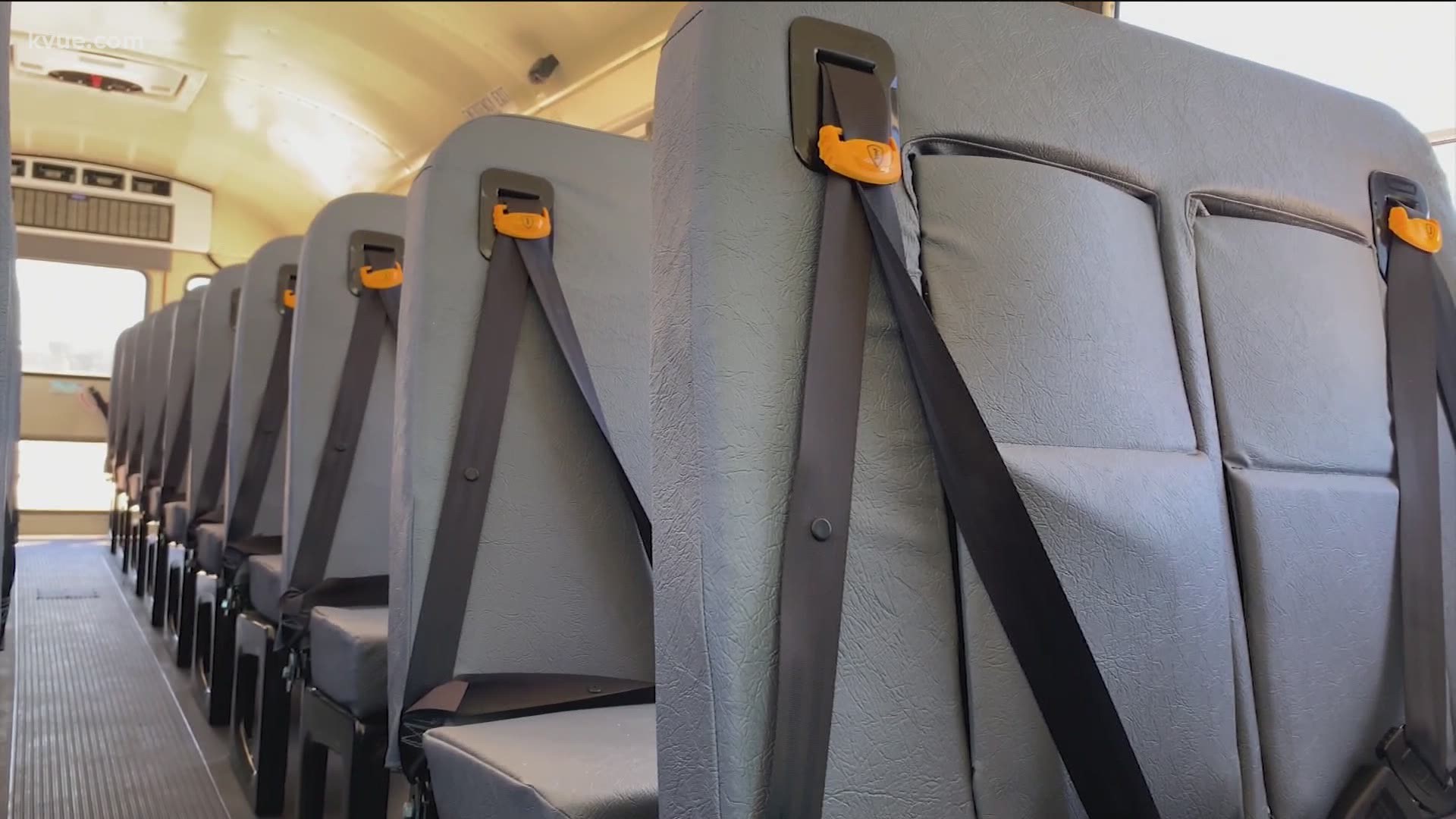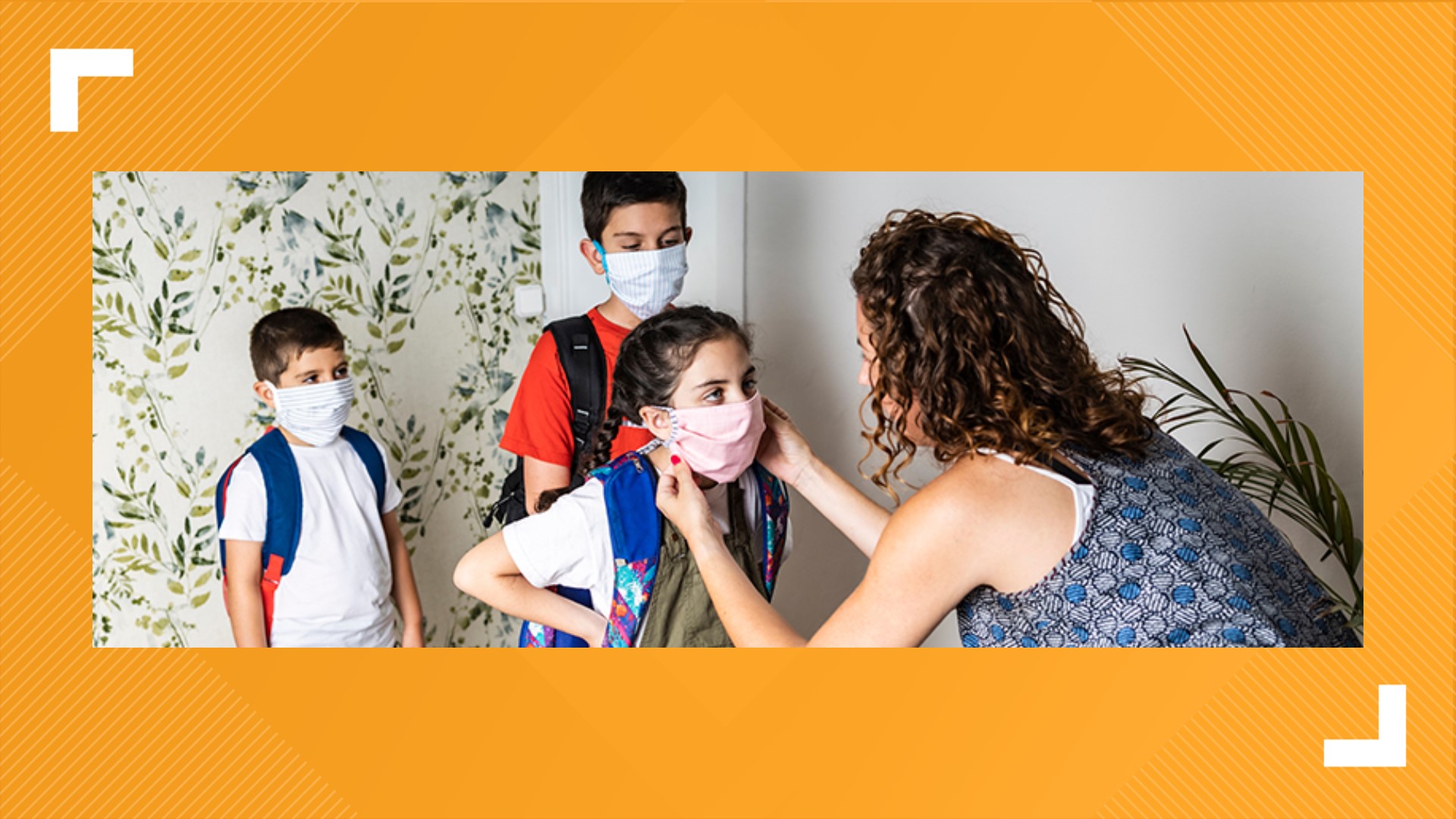As the school year begins for many districts, more COVID-19 cases are popping up in students and staff around North Texas, including at the districts in Frisco, Prosper, Lipan and Wylie.
The Texas Education Agency released health guidance including recommendations and requirements for districts when a case turns up.
The TEA says the Centers for Disease Control and Prevention research "has found that while children do get infected by COVID-19 and some severe outcomes have been reported in children, relatively few children with COVID-19 are hospitalized or have severe symptoms.”
Parents must ensure they do not send a child to school on campus if the child has COVID-19 symptoms. Schools may screen students for COVID-19 as well through asking questions by phone, other electronic methods or in person, according to the state education guidance.
Teachers and staff must screen themselves for COVID-19 symptoms prior to coming to the campus each day, the TEA says. They must report to the school system if they have any symptoms, are tested positive for COVID-19 or have had close contact with a person who is positive for COVID-19.
What do schools do when there is a suspected COVID-19 case on campus?
Schools must immediately separate any student who shows COVID-19 symptoms while at school until the student can be picked up by a parent or guardian.
Schools should clean the areas used by the individual who shows COVID-19 symptoms while at school, whether it's a student, teacher, or staff member, as soon as is feasible, the state guidance says.
Students who report feeling feverish should be given an immediate temperature check to determine if they are symptomatic for COVID-19.
What does the school do if the person is COVID-19 positive?
If there is a person who was on campus who later learns that they are COVID-19 positive, then the school is required to notify its local health department.
The school must close off the areas that are heavily used by the individual with the lab-confirmed case (student, teacher, or staff) until the non-porous surfaces in those areas can be disinfected, unless more than seven days have already passed since that person was on campus, the TEA says.
Schools must notify all teachers, staff and families of all students in a school if a lab-confirmed COVID-19 case is identified among students, teachers or staff who participated in any on-campus activities, according to the education guidance.
The notification must be consistent with legal confidentiality requirements.
When can a person with COVID-19 or COVID-19 symptoms return to campus?
If someone is confirmed with COVID-19 or has the symptoms of COVID-19, the person must stay home, the TEA says. They cannot return to campus until the school system screens the individual to determine that the following conditions for campus re-entry have been met.
If a person is confirmed with COVID-19, they can return when all three of the criteria below have been met:
At least 24 hours have passed since recovery or resolution of fever without fever-reducing medications
The person has improvement in symptoms
At least 10 days have passed since symptoms first appeared
If people have symptoms but have not been evaluated by a medical professional and they assume they have COVID-19, they cannot return to campus until the person has met all three of the criteria listed above.
If someone has COVID-19-related symptoms and wants to return to school before completing the stay-home period, the person must either obtain a doctor’s note clearing them to return to campus based on an alternative diagnosis or obtain an acute infection test at an approved testing location that comes back negative. People who are waiting for test results are asked to stay home.
If a child has tested positive, parents should opt their child to receive remote instruction until the below conditions for re-entry are met.
What if someone came in contact with someone with COVID-19?
If a person was recently exposed, they are asked to stay home. The TEA document refers to “close contact” with an individual who is lab-confirmed to have COVID-19.
The definition of close contact is evolving with our understanding of COVID-19, and individual scenarios should be determined by an appropriate public health agency.
In general, close contact is defined as: a. being directly exposed to infectious secretions (e.g., being coughed on); or b. being within 6 feet for a cumulative duration of 15 minutes; however, additional factors like case/contact masking (i.e., both the infectious individual and the potential close contact have been consistently and properly masked), ventilation, presence of dividers, and case symptomology may affect this determination.
The TEA says either (a) or (b) defines close contact if it occurred during the infectious period of the case, defined as two days prior to symptom onset to 10 days after symptom onset.
In the case of asymptomatic individuals who are lab-confirmed with COVID-19, the infectious period is defined as two days prior to the confirming lab test and continuing for 10 days following the confirming lab test.
Parents may also opt to have their students receive remote instruction if their child has had close contact with an individual who is lab-confirmed with COVID-19 until the 14-day incubation period has passed.
Symptoms consistent with COVID-19, as outlined by the TEA:
Have they recently begun experiencing any of the following in a way that is not normal for them?
- Feeling feverish or a measured temperature greater than or equal to 100.0 degrees Fahrenheit
- Loss of taste or smell
- Cough
- Difficulty breathing or shortness of breath
- Fatigue
- Headache
- Chills
- Sore throat
- Congestion or runny nose
- Shaking or exaggerated shivering
- Significant muscle pain or ache
- Diarrhea
- Nausea or vomiting


